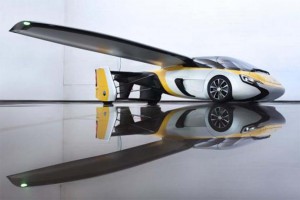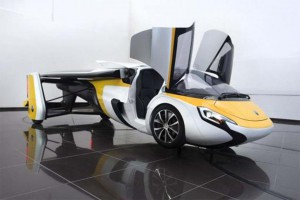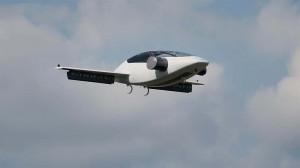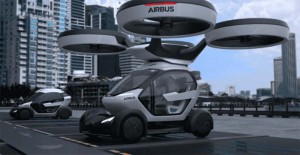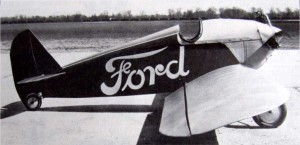It’s long been the stuff of science fiction, a fantasy that confounded even automotive pioneer Henry Ford, but a Slovakian start-up company says it is now taking orders for what could become the world’s first flying car – if it meets its delivery target of 2020.
Another European start-up, meanwhile, is pitching its own new craft as the world’s first flying taxi, a five-seater that can hover like a drone and fly like a jet.
Slovakia’s AeroMobil and Germany’s Lilium are just two of the many companies now working up ways to combine the best aspects of the automobile and the airplane. They include a number of start-ups as well as more traditional manufacturers like Airbus which is hoping to start testing a prototype of its own, single-seat flying car sometime this year.
The AeroMobil Flying Car was on display at last week’s Top Marques Monaco, the elegant principality’s annual showcase of all manner of luxury goods. Company officials announced they were ready to take pre-orders for the five-seater which is expected to carry a price tag of somewhere between $1.3 million to $1.6 million. AeroMobil hopes to have the first of 500 of the flying cars ready for delivery by 2020.
Looking like it rolled off the set of a sci-fi flick, the Flying Car’s wings can be opened or folded up in a matter of minutes, depending upon whether the vehicle was going to fly or drive. To take to the air, an operator would need both a pilot’s and a driver’s license, and the craft would need a traditional runway to take off.
On the ground, AeroMobil claims its craft will top out at 100 mph and travel up to 434 miles between fill-ups. In the air, range jumps to 466 miles, with a top speed of 223 mph.
The AeroMobil Flying Car was one of two such craft on display in Monaco, a Dutch start-up also exhibiting its three-wheeled PAL-V, which it claims to be “the first certified commercial flying car ever.”
Set to cost a minimum $400,000 – with a fully equipped model nudging $600,000 — the PAL-V looks more like the off-spring of a three-wheel motorcycle and a gyrocopter. Like a helicopter, it gets lift from its rotating blades, which fold up while driving, rather than wings.
The Dutch company hopes to beat its Slovakian rival to market, with deliveries set to start as early as 2018 for the craft, which can hit 112 mph in the air and travel up to 310 miles on a tank of fuel.
Such delivery schedules are notoriously unreliable, as aerocar fanciers have long recognized. Henry Ford himself hoped to develop an airborne counterpart to his legendary Model T that was dubbed the “Flying Flivver,” but the project was permanently grounded after a 1928 crash that killed the lead test pilot a close friend of the automotive pioneer.
A number of more recent projects, including the Transition, a craft developed by a cadre of MIT alums, have taken wing, have repeatedly been delayed, though the parent company, Terragugia claims it is now accepting advance reservations, as well.
(Terrafugia wants to develop a flying hybrid. Click Here for the story.)
That’s probably no surprise considering the technical challenges and the high cost of development. So, some observers are betting that the real breakthrough could come from companies with deep pockets.
That includes Airbus which, in March, unveiled a concept design for what it has dubbed the Vahana. Developed in cooperation with Italdesign, it relies on a modular design that allows a four-rotor drone unit to mount atop the cabin of a passenger car’s cabin. The vehicle’s wheels and chassis would be left behind as the aircraft flew to its destination. There it would mount on a new chassis, the drone portion separating for use with another flyer.
(Flying Flivvers and more. Henry Ford had many wild and amazing ideas. Click Here for a look at some of the ideas he developed.)
There are a number of issues related to flying cars, not all of them technical. For one thing: how many motorists will also be willing and able to obtain their pilots licenses? That has spawned interest in an alternative approach, the flying cab.
Munich-based Lilium has already run test flights of an early, two-seat prototype and is now working up a five-seat craft that would lift off and hover like a drone before extending its wings and then flying like a more conventional aircraft. The company claims it will be able to travel up to 190 miles at a speed of 190 mph.
“We have solved some of the toughest engineering challenges in aviation to get to this point,” Lilium Chief Executive Daniel Wiegand said in a new statement. Lilium’s roots are similar to those of Terrafugia, except its four founders are graduates of the Technical University of Munich.
Several other firms are exploring the potential for flying cabs, including eVolo, a start-up based in Mannheim, Germany that envisions start testing an 18-rotor drone-like two-seater next year.
Then there’s Uber, the ride-sharing giant that is also pushing into autonomous and fully driverless vehicles. Founder Travis Kalanick has hinted he’d like to develop a flying taxi, as well. So would Zee.Aero, a company funded by Google’s co-founder Larry Page. Neither of those firms have revealed their plans but they are also believed to be looking at drone-like contraptions that would be able to take off vertically, avoiding the need to send a passenger out to an airport at each end of their trip.
Might a traditional automaker enter the fray? Toyota applied for a patent two years ago on a means of folding away a flying car’s wings. But it has not yet publicly disclosed whether it is also looking to develop an airborne version of one of its own models.
(For a look at what Toyota patented, Click Here.)

